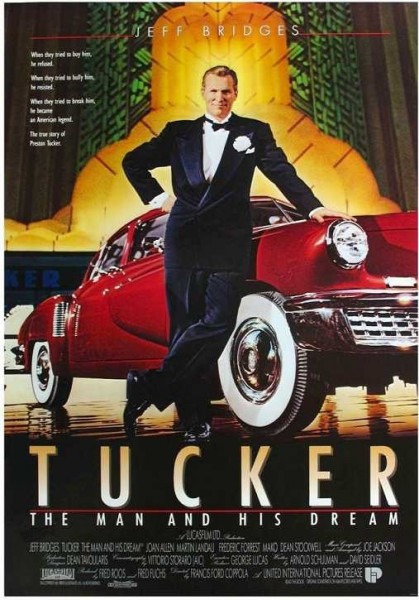The Tucker 48 Changed the Automotive World

Most people know about the Tucker 48 from the 1988 film “Tucker: The Man and His Dream” directed by Francis Ford Coppola. A highly-innovative vehicle, the Tucker 48 introduced cutting-edge automotive features and ideas that eventually became commonplace later. Its creator did the unheard of—he took on Ford and GM and basically lost in the end, because he wasn't properly capitalized and ran into a lot of pushback from the big boys in Detroit.
At Service King Henry Brown, we love the story of the Tucker 48 and its creator, so here are some interesting fact about the man and the car:
This “Car of Tomorrow” was the vision of Preston Thomas Tucker (1903-1956) of Ypsilanti, Michigan. The 48's original proposed price was said to be $1,000, but the actual selling price was closer to $4,000. One recently sold for $2.9 million at an auction.
In the end, only 51 Tuckers were built, of which only 47 exist today. The majority are on public display in car museums and at car shows and there is also one at Francis Ford Coppola's winery in Napa, CA.

Preston Tucker is obviously best known for the car that features his name, but this incredible automotive inventor and visionary did some other great things. These include working with the renowned Harry Miller on Indianapolis 500 race cars during the 1930’s; Inventing Tucker’s “Tucker Turret”—a gun turret that was used during World War II. And a prototype “combat car” armored personnel carrier that was eventually declined by the US military because it accelerated too rapidly. He also designed the Talisman, a snazzier version of the Tucker 48 and the Carioca, a sports car that was supposed to be made in Brazil. Preston Tucker dies in 1956 while he was working on the Carioca.

The very first Tucker 48 was assembled by chief mechanic John Eddie Offutt, who had worked with Tucker and Harry Miller at the Indianapolis 500. Offutt captured first place twice at Indy, so he was surely no slouch. The car was designed in Michigan, and built in Chicago in a huge factory that is now the site of the “Ford City Mall” in Detroit.
The most cutting-edge features introduced with the Tucker 48 included: A 4-speed manual, electronic pre-select transmission; a pop out safety glass windshield; padded dash and doors and upper doors that were cut into the roof line. Mechanically, it also had a 6 volt positive ground electrical system and could go from 0-60 mph in 10 seconds with a top speed of 120 mph.
The car is called the “Tucker ’48” because it came out in 1948, but many people called if the “Tucker Torpedo” as it was being built and advertised to the entire country. So, if someone says they own or have seen a Tucker Torpedo, tell them that it's actually a Tucker 48.
The Tucker 48 has lived on, because today you can purchase fiberglass replica bodies to build your very own Tucker 48 replicas. It's not likely that we will see too many Tuckers here in Gilbert, AZ any time soon, but if we do, we will give them much respect—for a car that was way ahead of its time and for an inventor who altered the future of automobiles.
Sources: Wikipedia, Tucker Collectors and Time












Social